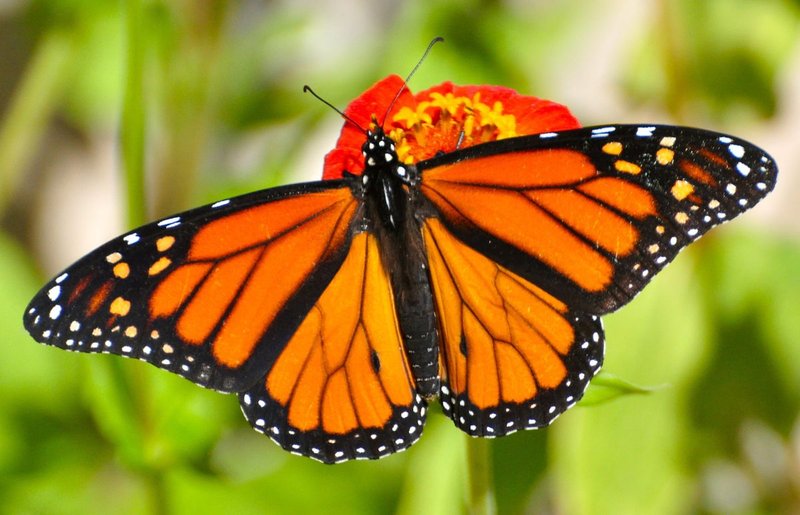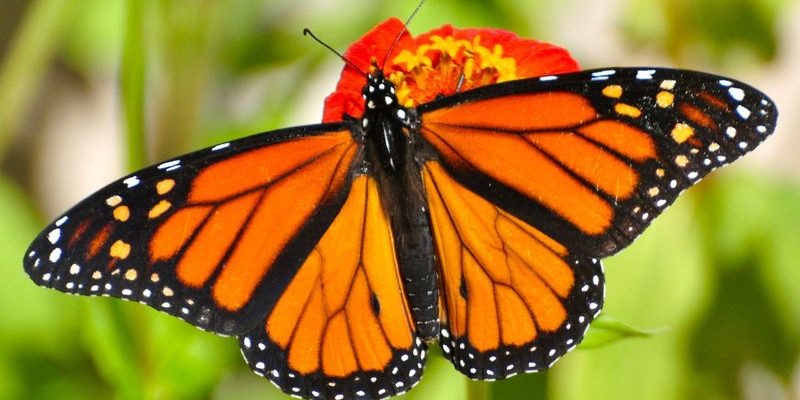
When you dig deeper into the lives of monarch butterflies, you’ll find that they’re not just your average garden visitor. They embark on epic journeys and have unique behaviors that make them stand out in the insect world. So, grab a cup of coffee, and let’s dive into ten intriguing facts about these amazing butterflies that might surprise you.
1. Monarchs Are Professional Migrators
You might think of migration as something only birds do, but monarch butterflies take to the skies too. Every year, these butterflies travel thousands of miles from North America to central Mexico for the winter. Imagine packing your bags and traveling from Canada all the way to the warm beaches of Mexico—now that’s dedication!
This journey can cover up to 3,000 miles and may take several generations of butterflies to complete. They’re not just wandering around; they use a mix of air currents and solar positioning to navigate. If you ever see one fluttering near your home, just remember—it could be on its way to a sunny refuge!
2. Monarch Butterflies Have a Life Cycle Like No Other
The life cycle of a monarch butterfly is pretty remarkable. They start as tiny eggs, usually laid on the underside of milkweed leaves. This particular plant isn’t just their home; it’s vital for their survival. The caterpillars that hatch from these eggs feed solely on milkweed, which contains toxins that make them distasteful to predators. It’s brilliant in a sense!
Once they’ve consumed enough milkweed, they form a chrysalis—a protective casing. Inside, they undergo a transformation that’s nothing short of magical. After about 10 days, they emerge as stunning butterflies, ready to start life anew. This whole process—from egg to butterfly—takes roughly 10 days, but don’t be fooled; it’s just the beginning of their incredible journey.
3. They Have Toxic Defense Mechanisms
Here’s the thing about monarch butterflies: they’re not just pretty; they come equipped with a natural defense system. When caterpillars munch on milkweed, they absorb its toxins. This means when they become butterflies, they’re not just beautiful; they’re also unappetizing to birds and other predators that might want to snack on them.
This toxicity doesn’t just protect them; it makes them an important part of their ecosystem. Birds learn to associate the bright colors of the monarch with a bad taste, keeping the butterflies safe. In a way, their stunning colors serve as a warning—a beautiful but dangerous creature!
4. Monarchs Are Masters of Camouflage
You might think their bright colors would make them easy to spot, but monarchs have a few tricks up their sleeves. When they’re resting on a flower or a branch, they can close their wings, which helps them blend in with their surroundings. The colors on the underside of their wings—often brownish and mottled—make it challenging for predators to see them.
In addition to their camouflage, monarchs also tend to rest in large groups while migrating. This behavior not only provides warmth but also offers safety in numbers, reducing the chances of being picked off by hungry predators. Isn’t nature clever?
5. Monarch Butterflies Are Declining in Numbers
While these butterflies are iconic, their populations have been decreasing in recent years. Habitat loss, climate change, and pesticide use threaten their survival. Monarchs rely on milkweed for reproduction, and as more and more natural habitats are destroyed, their numbers shrink.
Efforts are underway to help protect these beautiful creatures. Conservation groups are planting milkweed and promoting butterfly-friendly gardens. You can also do your part! Planting milkweed and nectar plants in your garden can help provide a safe haven for monarchs and other pollinators.
6. Monarchs Have a Unique Migration Strategy
Monarchs have a fascinating approach to migration. Unlike many birds that travel in flocks, monarchs make their journeys solo. They can fly at altitudes of up to 10,000 feet, and they often ride the wind to conserve energy. It’s like they’re harnessing the sky’s power to help them on their long trek.
Interestingly, they don’t migrate to the same breeding grounds each year. Instead, they rely on inherited knowledge passed down through generations. It’s a bit like following in the footsteps of ancestors. They always know where to go!
7. They Can Live a Long Time for an Insect
You might be surprised to learn that some monarch butterflies can live up to nine months, especially those that migrate. While most butterflies have a lifespan of only a few weeks, the migratory ones take their time. They don’t just focus on reproducing right away; they spend months making their journey.
This longevity allows them to survive the harsh winter months in Mexico. They hibernate in colonies, resting until the temperatures rise again, signaling it’s time to return home. It’s like a long vacation in a warm paradise!
8. Monarchs Communicate Through Chemical Signals
Butterflies may not speak like us, but they have their unique way of communicating. Monarchs release pheromones—chemical signals that convey messages to other butterflies. This can play a role in finding mates or letting others know they’re nearby.
Imagine a secret language that only they can understand! This means that when you see several butterflies fluttering around, they’re not just hanging out; they could be in a complex social interaction that we can’t quite see.
9. They’re Important Pollinators
You might think of bees as the stars of pollination, but monarch butterflies play a crucial role too! As they sip nectar from flowers, they inadvertently transfer pollen from one bloom to another. This helps plants reproduce and ensures a healthy ecosystem.
Without pollinators like monarchs, many plants would struggle to survive, leading to a ripple effect across the food web. By planting flowers that attract these butterflies, you’re supporting not only their population but also the broader environment.
10. Monarch Butterflies Are Cultural Icons
Monarch butterflies hold a special place in various cultures across the world. For many, they symbolize transformation, hope, and resilience. In Mexico, where they migrate every year, they’re celebrated during the Day of the Dead festival. People believe that the butterflies represent the souls of their ancestors returning home.
Their beauty and remarkable journey have inspired countless stories, artworks, and poems, making them cultural icons in addition to being fascinating insects. So next time you see one flutter by, you might just recognize the deeper meaning behind their delicate dance.
In conclusion, monarch butterflies are more than just beautiful insects flitting around your garden. They are champions of migration, symbols of resilience, and vital players in our ecosystem. Learning about their unique traits and challenges helps us appreciate the natural world around us. So, whether you’re a butterfly enthusiast or just someone who enjoys watching them, remember that these remarkable creatures have a story worth knowing. By protecting them and their habitats, we can ensure that future generations get to experience their beauty too.

